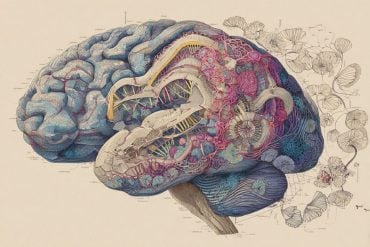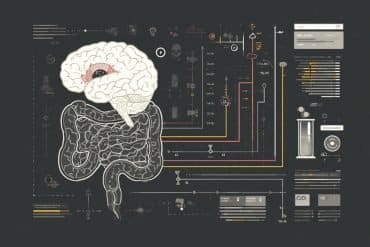Summary: A new study found only modest developmental delays in children aged 5 and under due to the COVID-19 pandemic. Analyzing data from over 50,000 children using the Ages and Stages Questionnaire-3 (ASQ-3), the study observed slight declines in communication, problem-solving, and personal-social skills, with no significant changes in motor skills.
Despite the potential for greater developmental impacts due to pandemic-related disruptions, the findings suggest that the youngest children were relatively resilient in their development. The research underscores the importance of continued monitoring and support for child development post-pandemic.
Key Facts:
- The study analyzed responses from over 50,000 children aged 0 to 5 years using the ASQ-3, a comprehensive measure of child development.
- Findings revealed modest decreases in developmental scores in communication, problem-solving, and personal-social domains, but no change in motor skills.
- Despite widespread disruptions during the COVID-19 pandemic, such as social isolation and increased caregiver stress, the youngest children displayed remarkable resilience in developmental outcomes.
Source: Johns Hopkins Medicine
Infants and children 5 years old and younger experienced only “modest” delays in developmental milestones due to the COVID-19 pandemic disruptions and restrictions, a study led by Johns Hopkins Children’s Center finds.
In a report on the study that will be published April 22 in JAMA Pediatrics, investigators evaluated possible links between pandemic-related disruptions to everyday life and changes in developmental milestone screening scores.

The data were from the Comprehensive Health and Decision Information System (CHADIS), a web-based screening platform caregivers use to complete surveys about their children’s development. It is used by more than 5,000 pediatric practices in 48 U.S. states.
Using the Ages and Stages Questionnaire-3 (ASQ-3), a caregiver-completed measure of child development routinely collected as part of pediatric care, researchers say they found only small decreases in communication, problem-solving, and personal-social skills, and no changes in fine or gross motor skills among children in the study.
“We found, overall, that while there are some changes, the sky is not falling, and that is a really important and reassuring finding,” says Sara Johnson, Ph.D., M.P.H., corresponding author of the study, director of the Rales Center for the Integration of Health and Education at Johns Hopkins Children’s Center, and Blanket Fort Foundation professor of pediatrics at the Johns Hopkins University School of Medicine.
Numerous studies, the researchers say, found the COVID-19 pandemic and related lockdown restrictions disrupted the lives of many people, including families with young children.
Everyday life and daily routines were upended, as schools and child care centers closed, many people began working from home and social contacts diminished. Many experienced increased stress, anxiety and social isolation due to these changes and activity cancellations.
Research has also shown the pandemic is linked to lower child health-related quality of life, increased mental health concerns, decreased sleep and increased risk of obesity.
However, the impact of the pandemic on developmental milestones among young children in the U.S. remained unclear, in part because studies designed to address them were done outside the United States, or in small samples.
In the new study, Children’s Center researchers looked at the developmental milestone status of 50,205 children, ages 0 to 5 years, drawn from a sample of more than half a million children whose parents or caregivers completed the ASQ-3.
The ASQ-3 assesses children’s developmental milestones in five skill domains: communication, gross motor, fine motor, problem-solving and personal-social.
Researchers compared the children before and during the pandemic from 2018 to 2022 and found ASQ-3 score decreases in the communication (about 3%), problem-solving (about 2%) and personal-social (about 2%) skill domains. They found no changes in fine or gross motor skill domains.
When looking specifically at infants 0–12 months old, similarly modest effects were observed, and there were only decreases in the communication domain (about 3%) and problem-solving domain (about 2%).
“We thought it was possible infants might experience less impact than the older kids, given that many caregivers may have spent more time at home with their very young children,” says Johnson.
“But we saw generally the same things in infants as we did for older kids.”
Also, given an increase in parent and caregiver worry and stress, researchers investigated whether parents and caregivers reported more worries about their child during the pandemic, regardless of milestone achievement, and found worries about their child only increased slightly during the pandemic, compared to before the pandemic.
While the researchers say the findings are reassuring, they add that the implications for children’s long-term development remain unclear.
“It is important for us to continue to keep an eye on kids of all ages in terms of development, so we can understand whether these changes have longer-term implications for children or if new challenges emerge as children age,” says Johnson.
Johnson and her team of investigators believe their study findings will aid in planning for future public health crises, and also demonstrate the importance of shoring up the clinical infrastructure of overburdened health systems in the U.S., particularly developmental behavioral pediatricians, who are specially trained to evaluate and treat developmental concerns.
These resources will be essential to respond to the developmental needs of children now and in the future.
The investigators cautioned that the study did not factor in some variables that might have changed the findings, such as prenatal substance abuse and other health conditions. In addition, infants born preterm were excluded from the study, which may underestimate developmental impacts for this subgroup.
Researchers also cannot rule out “selection bias” among health care providers participating in CHADIS, and there was no comparison group of children who weren’t exposed to COVID-19 pandemic restrictions.
Along with Johnson, the study authors from Johns Hopkins include Molly Kuehn, Jennifer Lambert, Lauren Klein, Barbara Howard (also with CHADIS Inc.), Raymond Sturner (also with the Center for Promotion of Child Development through Primary Care) and Eliana Perrin. J. Paul Spin from EVERSANA was also an author.
Funding: The study was funded by the Johns Hopkins Population Center and its infrastructure grant (P2CHD042854) from the National Institute of Child Health and Human Development (NICHD).
Howard and Sturner are members of the board of directors of the Center for Promotion of Child Development through Primary Care, and are paid employees or consultants at both the center and CHADIS, Inc.
The authors affiliated with The Johns Hopkins University did not declare any conflicts of interest under Johns Hopkins University policies.
About this COVID-19 and neurodevelopment research news
Author: Kaitlyn Roman
Source: Johns Hopkins Medicine
Contact: Kaitlyn Roman – Johns Hopkins Medicine
Image: The image is credited to Neuroscience News
Original Research: Open access.
“Developmental Milestone Attainment in US Children Before and During the COVID-19 Pandemic” by Sara Johnson et al. Pediatrics
Abstract
Developmental Milestone Attainment in US Children Before and During the COVID-19 Pandemic
Importance
Restrictions related to the COVID-19 pandemic disrupted the lives of young children, but the association between the pandemic and any changes in early childhood developmental milestone achievement in the US remains unclear.
Objectives
To determine the association between the COVID-19 pandemic and changes in developmental screening scores among US children aged 0 to 5 years and to investigate whether caregivers self-reported more worries about their children or concerns about children’s behavior during the pandemic, regardless of milestone achievement.
Design, Setting, and Participants
This was a cohort study using an interrupted time series analysis comparing prepandemic (March 1, 2018, to February 29, 2020), interruption (March 1 to May 31, 2020), and intrapandemic (June 1, 2020, to May 30, 2022) periods among 50 205 children (randomly sampled from a population of 502 052 children) aged 0 to 5 years whose parents or caregivers completed developmental screening at pediatric visits at US pediatric primary care practices participating in a web-based clinical process support system.
Exposure
COVID-19 pandemic period.
Main Outcomes and Measures
Age-standardized Ages and Stages Questionnaire, Third Edition (ASQ) domain scores (communication, personal-social, problem-solving, gross motor, fine motor), and rate of caregivers’ concerns about the child’s behavior or worries about the child as measured on the ASQ.
Results
A total of 50 205 children (25 852 [51.5%] male; mean [SD] age, 18.6 [16.0] months) and 134 342 ASQ observations were included. In adjusted models, significant age-specific mean score decreases from prepandemic to intrapandemic were observed in communication (−0.029; 95% CI, −0.041 to −0.017), problem-solving (−0.018; 95% CI, −0.030 to −0.006), and personal-social (−0.016; 95% CI, −0.028 to −0.004) domains. There were no changes in fine or gross motor domains prepandemic to intrapandemic. For infants aged 0 to 12 months, similar effect sizes were observed but only for communication (−0.027; 95% CI, −0.044 to −0.011) and problem-solving (−0.018; 95% CI, −0.035 to −0.001).
After accounting for age-standardized ASQ scores, caregiver worries about the child increased slightly in the intrapandemic period compared with the prepandemic period (rate ratio, 1.088; 95% CI, 1.036-1.143), but there were no changes in caregiver concerns about the child’s behavior. While changes in developmental screening scores were modest (2%-3%), nationwide, this could translate to more than 1500 additional recommended developmental referrals over baseline each month.
Conclusions and Relevance
Modest changes in developmental screening scores are reassuring in the short term but may tax an already overburdened developmental behavioral pediatrics infrastructure. Continued attention to developmental surveillance is critical since the long-term population- and individual-level implications of these changes are unclear.






